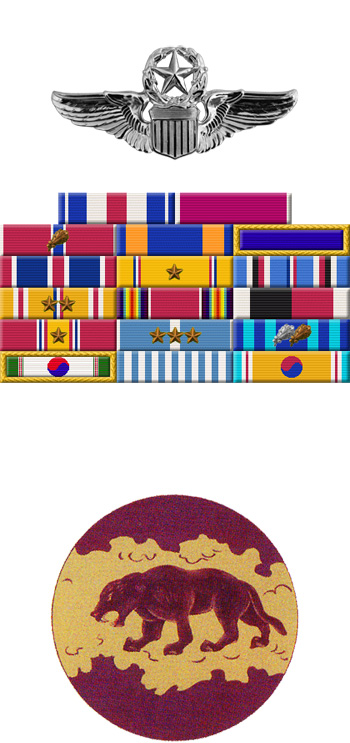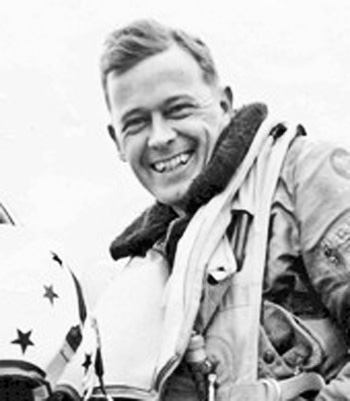
|
John M. Thacker |
 |
|||
| Rank, Service | ||||
Colonel O-6, U.S. Air Force |
||||
| Veteran of: | ||||
|
||||
| Tribute: | ||||
John Thacker was born on August 9, 1918, in Petersburg, Virginia. He enlisted in the Aviation Cadet Program of the U.S. Army Air Corps on March 21, 1940, and was commissioned a 2d Lt and awarded his pilot wings at Randolph Field, Texas, on February 16, 1941. Lt Thacker was then assigned to the 46th Pursuit Squadron (later renamed Fighter Squadron) of the 15th Pursuit Group (later renamed Fighter Group) at Wheeler Field, Hawaii, and later at Hickam Field, Mokuleia Field, and Hilo Field, Hawaii, and on the islands of Canton and Makin in the Pacific, from February 1941 to April 1944. During this time, Lt Thacker became one of the few fighter pilots to get airborne during the attack on Pearl Harbor and he was later credited with the destruction of 1 enemy aircraft in aerial combat on January 16, 1944. Thacker returned to the U.S. in April 1944, and served as a flight instructor and air inspector in Idaho, Louisiana, and Kansas, for the remainder of the war. After the war, he served as an inactivation officer in Colorado until May 1946, and then served at Selfridge Field, Michigan, until June 1946. Col Thacker next served as the commander of the 87th Fighter Squadron of the 79th Fighter Group in Austria from August 1946 to April 1947, and then as the commander of the 79th Fighter Group and base air inspector until transferring to the 86th Fighter Group at Neubiberg AB, Germany, in July 1947. He commanded the 527th Fighter Squadron of the 86th Fighter Group from January to October 1948, and then Personnel Officer and Executive Officer of the 33rd Fighter Wing at Otis AFB, Massachusetts, until July 1950, when he deployed to Korea at the outbreak of the Korean War. Col Thacker served with the 18th Fighter-Bomber Wing from July to September 1950, and then as Chief of Operations and Plans with the 315th Air Division until June 1951. His next assignment was as deputy commander, executive officer, and then commander of the 51st Fighter Interceptor Group in Korea from June to November 1951, and then deputy commander of the 51st Fighter Interceptor Wing from November 1951 to January 1952. He served as material officer, training and operations officer, deputy commander, and then commander of the 3625th Flying Training Wing at Tyndall AFB, Florida, from February 1952 to March 1955, followed by service as Assistant for Logistics with Headquarters Air Transport Command at Scott AFB, Illinois, until August 1957. Col Thacker was executive officer and then deputy commander of the 3555th Combat Crew Training Wing at Perrin AFB, Texas, from August 1957 to January 1960, and after completing foreign service training, he served as Chief of the U.S. Air Force Mission to Columbia, from July 1960 to September 1963. His next assignment was as an Air Force advisor to the New Jersey Air National Guard from September 1963 to January 1968, followed by service as Inspector General with Headquarters Command at Bolling AFB, Washington, D.C. from January 1968 until his retirement from the Air Force on March 1, 1970. John Thacker died on March 6, 2009. |
||||
|
||||

